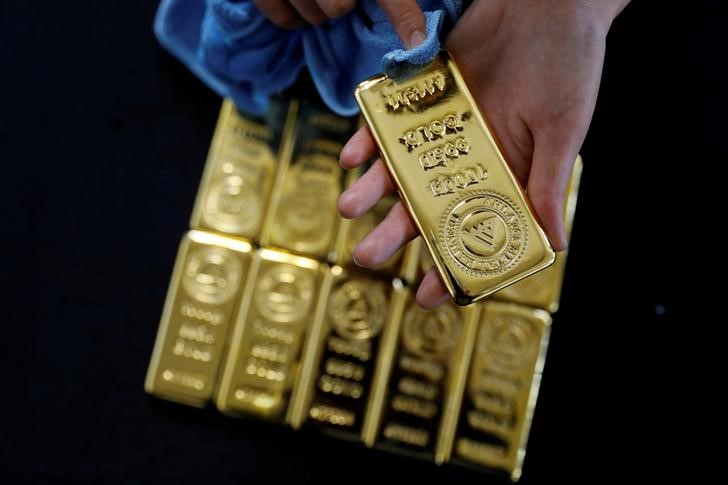Investing.com - Gold prices rose to the highest level in ten months on Friday after the latest U.S. employment report came in weaker-than-expected, underlining doubts over prospects for a third Federal Reserve rate hike this year.
The U.S. economy added 156,000 jobs in August from the prior month, while the unemployment rate ticked up to 4.4%, the Labor Department said.
Economists had expected 180,000 new jobs and an unemployment rate of 4.3%.
Gold futures for December delivery ended up 0.57% at $1,329.79 on the Comex division of the New York Mercantile Exchange, its highest close since September 2016.
For the week, gold prices jumped 2.46%, the largest weekly gain since February amid heightened geopolitical tensions and growing doubts over the possibility of another U.S. interest rate increase this year.
Gold is highly sensitive to rising rates, which lift the opportunity cost of holding non-yielding assets such as bullion, while boosting the dollar.
The dollar initially weakened after the jobs report, which also supported metals prices. A weaker dollar makes gold futures, which are denominated in the U.S. currency, cheaper for foreign buyers.
The U.S. dollar index, which measures the greenback’s strength against a trade-weighted basket of six major currencies, was up 0.25% to 92.82 late Friday after initially falling to a low of 92.05.
For the week, the index was up 0.1% after ending the month of August lower, its sixth consecutive monthly decline, notching up its longest losing streak in a decade. The index is down 9.7% so far this year.
Elsewhere in metals trading, silver futures were up 1.37% to $17.71 a troy ounce late Friday, its highest close since June 7 and platinum was up 1.28% to a six-month high of $1,011.25.
Among base metals, copper for December delivery closed up 0.73% to $3.121 a pound. Prices are hovering at nearly three-year highs after recent rally spurred by growing confidence in the global economy.
In the week ahead, market watchers will be awaiting the outcome of Thursday’s European Central Bank meeting for fresh clues on when the central bank will shift away from its ultra-easy policy.
In the U.S., a report on service sector growth will be the highlight of the holiday-shortened week.
Ahead of the coming week, Investing.com has compiled a list of these and other significant events likely to affect the markets.
Monday, September 4
The UK is to release data on construction activity.
Financial markets in the U.S. and Canada are to be closed for the Labor Day holiday.
Tuesday, September 5
The Reserve Bank of Australia is to announce its benchmark interest rate and publish a rate statement which outlines economic conditions and the factors affecting the monetary policy decision.
Switzerland is to publish inflation figures.
The UK is to release data on service sector activity.
The U.S. is to release a report on factory orders.
Federal Reserve Governor Lael Brainard is to speak at an event in New York, while Minneapolis Fed President Neel Kashkari is to speak at an event in Minnesota.
Wednesday, September 6
Australia is to release data on second quarter economic growth.
Canada is to release reports on the trade balance and labor productivity.
Later in the day, the Bank of Canada is to announce its benchmark interest rate and publish a rate statement.
The U.S. is to publish figures on the trade balance and the Institute for Supply Management is to publish its manufacturing index.
Thursday, September 7
Australia is to release data on retail sales and the trade balance.
The UK is to publish industry data on house price inflation.
The ECB is to announce its latest monetary policy decision and President Mario Drahi is to hold a press conference.
The U.S. is to report on initial jobless claims.
Friday, September 8
China is to release data on the trade balance.
The UK is to report on manufacturing production and the trade balance.
Canada is to round up the week with its monthly employment report.
